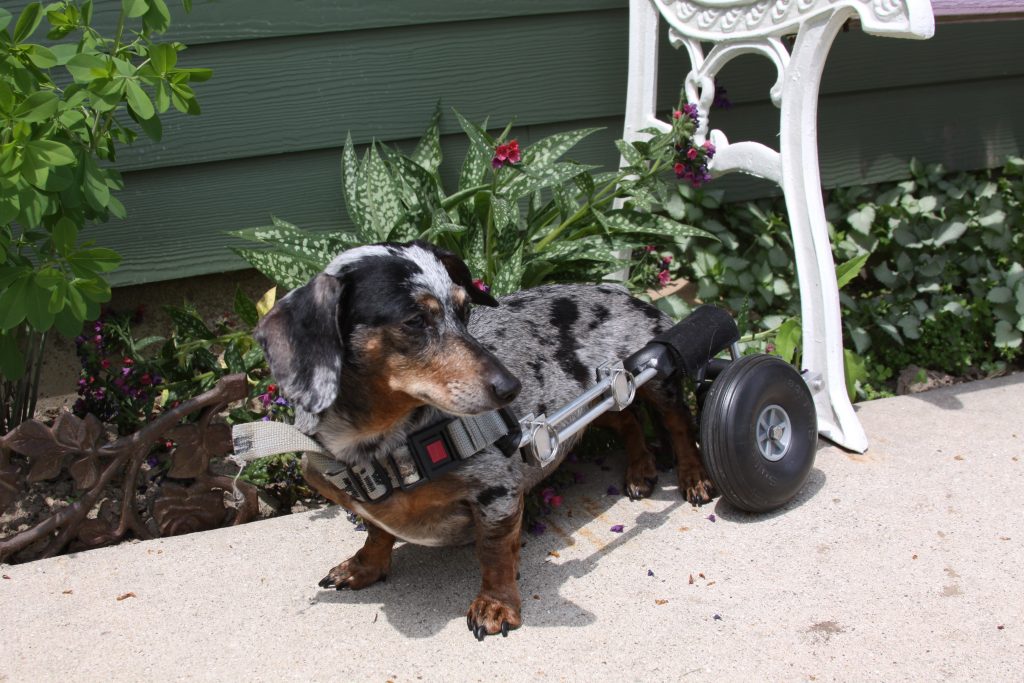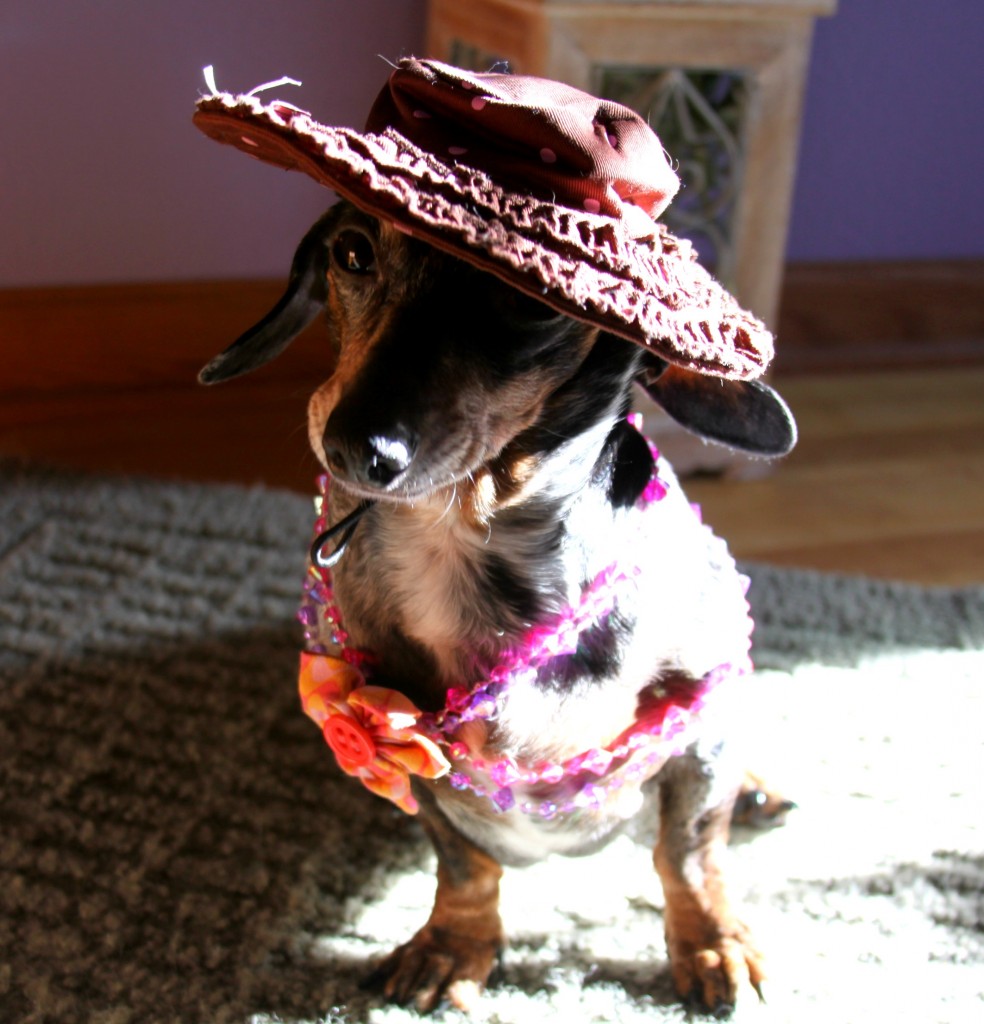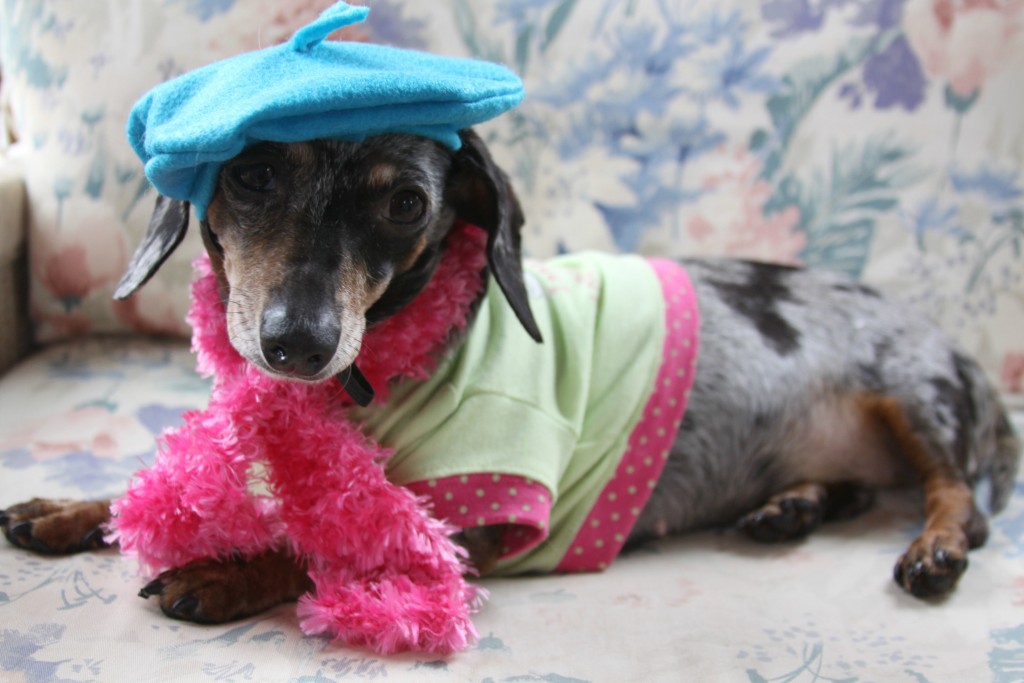
Earlier on my blog today I shared that Gidget isn’t able to use her hind legs, though after a visit to the vet, we aren’t exactly sure why. She’s not new to IVDD having been “down” before and rehabilitated by the rescue I adopted her from. And since I’ve gotten her she’s never fully walked “normally” but with a wobbly walk. But she is pretty much completely down in the hind quarters once again.
After I shared the post to Facebook about this, I received a note from Kim who runs Hotdog Hill Sanctuary in Virginia where she cares for disabled dachshunds, many with IVDD.
She shared a recent article she came across about the culture shift in veterinarian medicine regarding treatment of animal spinal cord injuries and disc disease. I felt it worthy passing along the article. Just click on the link here:
Why the Standards of Care for Spinal Cord Injuries Are Changing
While I’m not an expert or a veterinarian, I have had my share of experience with three dachshunds with IVDD, as many of you know.
This newest information makes sense to me. And as Kim also stated via our discussion on Facebook having much more experience than me, “You know with so many- each different- we have to change up our routine to meet them- some get too stressed by crate/pen rest and it did more harm than good thrashing around, etc- – we know our dogs best and we have to use our experience too.”
With my recent episode with Gidget not walking again I must say also that I realized again how education is key. I was able to deal with this much more calmly as I know my options. I also feel I know Gidget best and what will, and won’t, serve her. I think this is crucial.
I’ve also come to accept that sometimes no matter what one does, the outcome may be the same. Being paralyzed isn’t a terrible thing and I do believe the stigma is becoming less and less. At least I hope so.
From my experience, paralyzed dogs don’t realize they can’t use their hind legs. It’s really no big deal to them. They continue to live life just like they did before. I’ve found often it is much harder for their care taker to handle it. And yes, I can personally speak to the fact that I didn’t want to accept this when my first dachshund went down. Oh! Did I learn a lot and I’m so grateful!
Another factor in sharing this article is that as always, I want to give hope to others who may face this with their pet. There are options! It just takes a little research, talking with your vet, determining your pet’s specific needs, patience, and most of all love.
I know so often people who are facing a pet with paralysis have carried a huge amount of guilt that they couldn’t afford surgery. But clearly, there are many ways in which you can help your pet. There is hope!
Thank you for sharing and subscribing to my blog updates.


